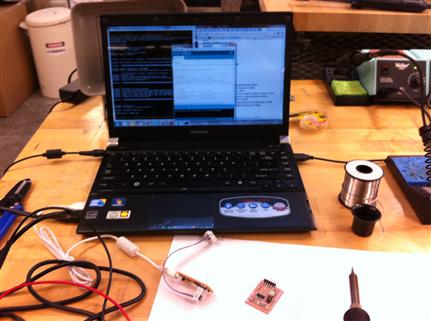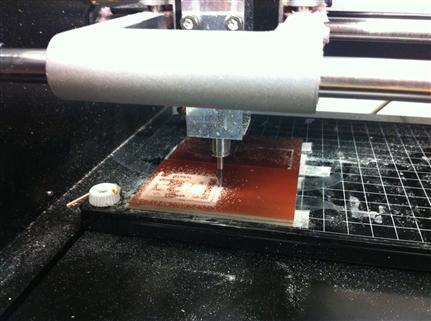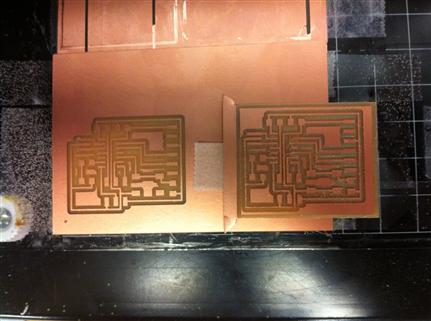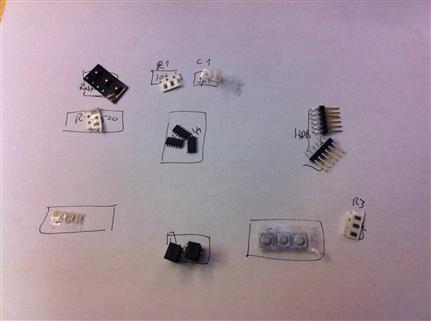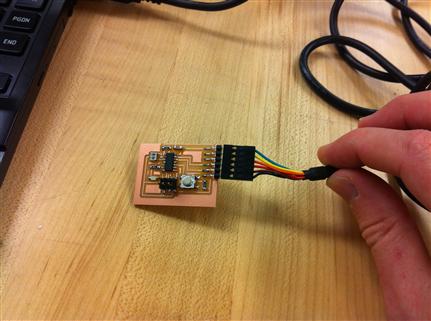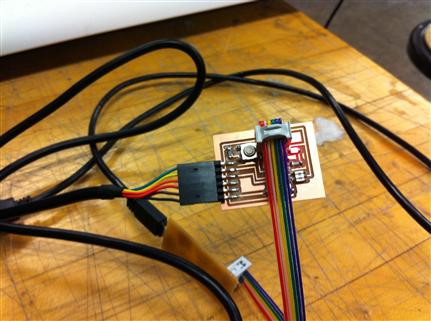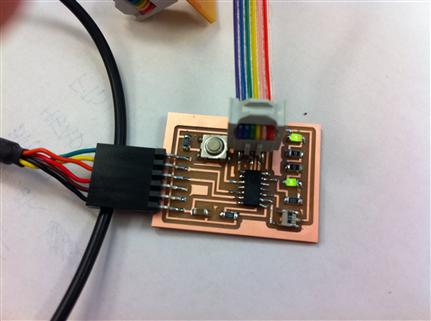I added an LED and a button to the basic board, milled but and stuffed it, then connected it to my PC; the board was recognized by the driver bundled with AVR Studio. I used the Arduino sample David had showed us (replacing pin 13 with pin 7) to test the board; got an error message (intilization failed, rc =-1 Doublecheck connections and try again, or use -F to override this check.) and solved it by flipping the rainbow cable. Programming was successful but the LED still didn’t blink. Eyal showed me how to test communication using PuTTY, and we found out it didn’t communicate. I headed back to the shop and realized I soldered the LED the wrong way: the green stripe should be away from the power source and closer to the GND. As usual, upon removing the LED it came off with the traces.
Back to square one. Mill, stuff, test, program with Arduino. This time, the LED blinked first! I then wrote a few simple programs, in C (blink LED on button press, blink LED a number of times as typed by the user) and Arduino (Blink LED, light LED on button press, serial communication).
